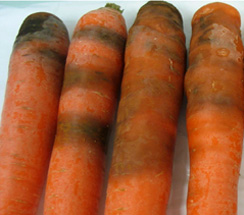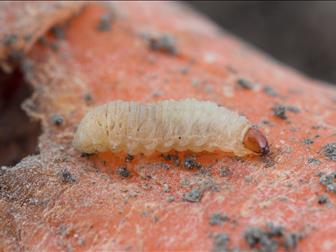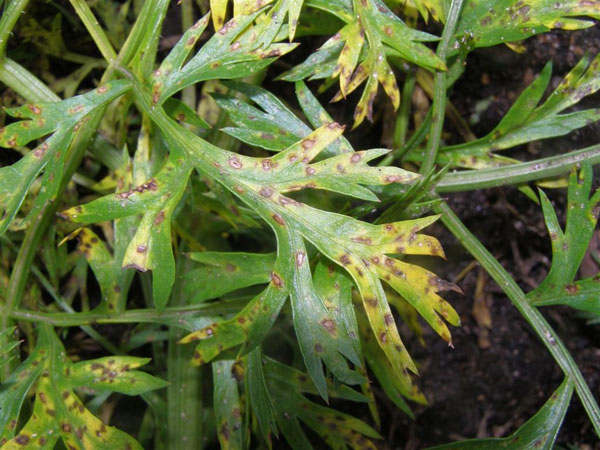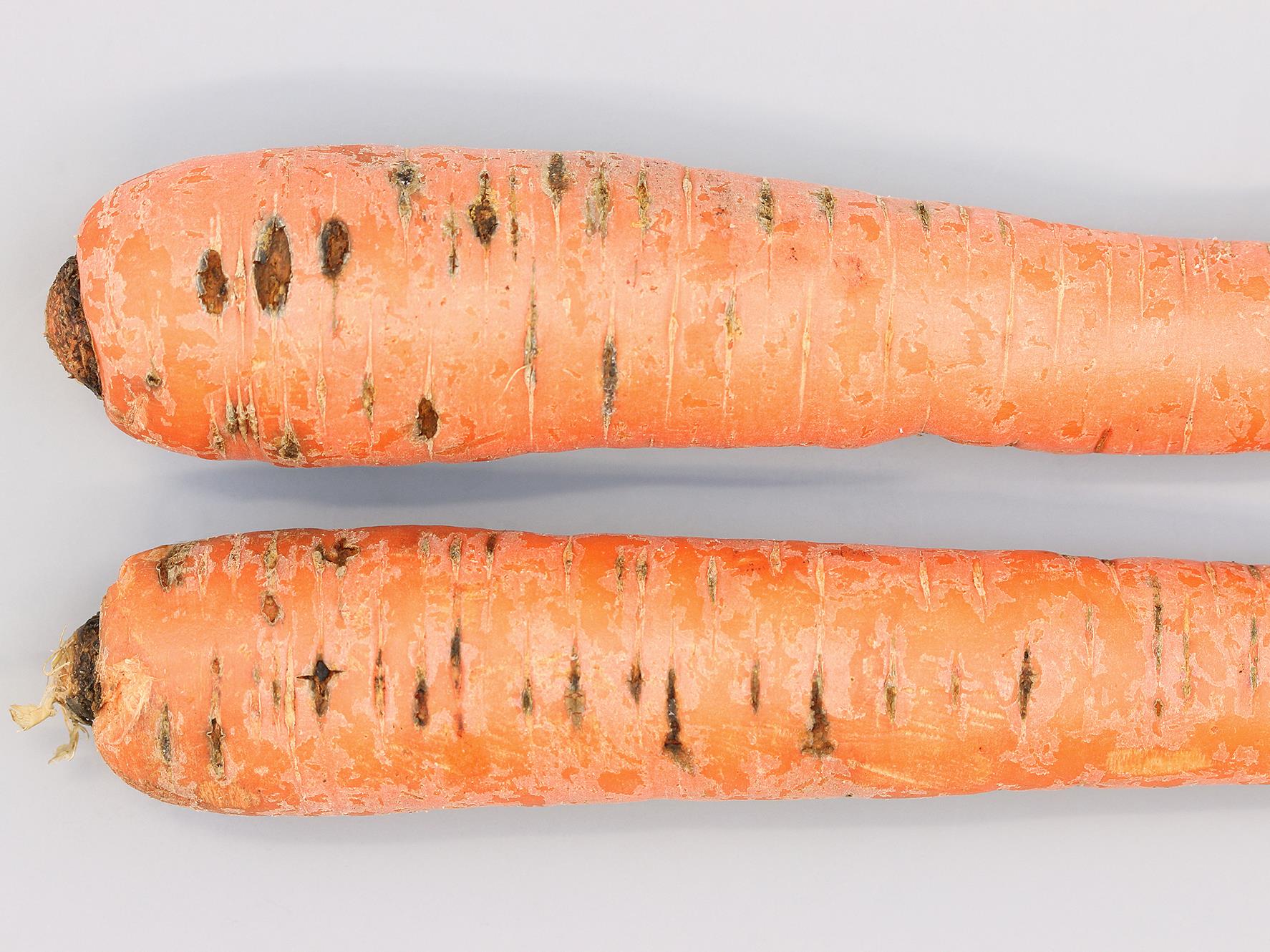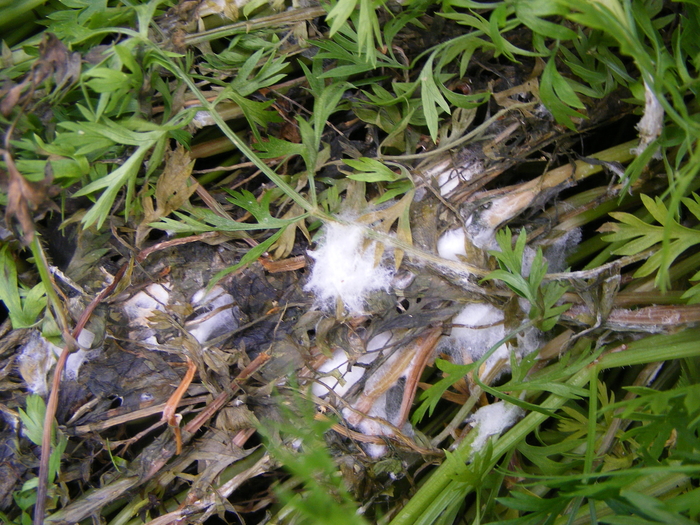
Zanahoria
How to recognize and combat fusarium rot in carrots
Rot Or Fusariosis
Fungus
Type:
Risk to the plant:
HIGH
Fusarium Solani
Pathogen:
Fusariosis
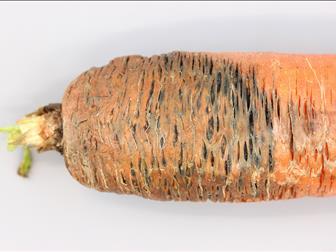
WHO CAUSES IT?
Fusarium solani is a phytopathogenic fungus that causes important diseases in a variety of plants, including carrots. This fungus is found in soil and can survive for long periods in the absence of a host by forming resistant spores called chlamydospores. Fusarium solani is introduced into the plant through wounds in the roots or by direct contact with the mycelium. Once inside, the fungus colonizes the plant's vascular system, clogging the vessels and causing symptoms of wilting and rot. The fungus produces conidia, which are dispersed by wind and water, facilitating spread to new plants. In addition, it can persist in the remains of infected plants and in the soil, which complicates its eradication. The ability of Fusarium solani to infect through multiple routes and its persistence in the environment make it a difficult pathogen to control in agricultural crops.
SYMPTOMS
The disease caused by Fusarium solani in carrots manifests itself mainly as rot or fusariosis, affecting both the roots and the aerial part of the plant. Symptoms include discoloration and decay of affected tissues, which can lead to plant death if the infection is severe. In carrots, the infection typically begins at the roots, spreading upward and causing rot.
- Brown to black discoloration at the roots.
- Root rot with an unpleasant odor.
- Wilting of the aerial part of the plant.
- Reduction of plant vigor and growth.
- Tissue necrosis in the affected areas.
- Premature death of severely affected plants.
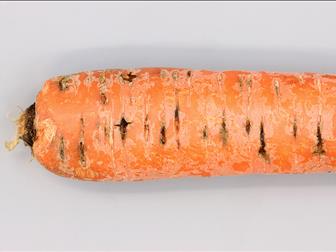

DEVELOPMENT CONDITIONS
Temperature:
20°C - 30°C
Humidity:
70% - 90%
HOW IS IT SPREAD?
Irrigation water, Wind, Contaminated tools, Infested soil, Infected plant remains, Infected seeds
HOW TO ELIMINATE IT?
Home treatments
Natural allies
There are no natural allies
Chemical treatments
There are no treatments for this disease. Treatments are directed at the insect vectors that transmit it. See insect treatments.
RECOMMENDED PRODUCTS TO ELIMINATE THE PEST
REPELLENT PLANTS
-
RECOMMENDATIONS
- Use new or disinfected substrate if you are going to plant in pots.
- Rotate crops, do not always plant the same thing in the same place.
- Avoid flooding the soil, excess moisture favors the fungus.
- Choose resistant varieties if they are available for your cultivation.
- Do not plant in soils where plants have already dried out due to this disease.
- Improve soil drainage by adding sand or organic matter.
- If a plant is severely affected, remove it, roots and all, and dispose of it away from the garden.



